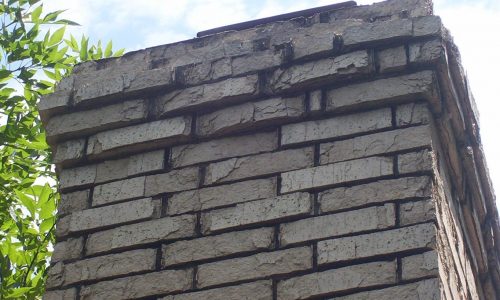Spalling
Masonry work is deteriorating
The facing of your bricks crumbling, flaking or deteriorating around your home or building is a process called spalling. This condition is from freeze and thaw cycles. Other reasons may involve a combination of moisture, acids from combustion byproducts and possibly poor manufacturing. The harsh weather and wide temperature swings that create continuous moisture are the cause. If the masonry work could dry before freezing the spalling would be very minimal.
Repairing spalling masonry
There are situations where it is best to completely rebuild. The outcome of repairing might be as equal or close in cost as to rebuilding the structure or section. Safety might be a factor when assessing to repair versus rebuilding.
Common areas of spalling
The tops of masonry work without proper capping and water runoff will have significant spalling. Other areas that are easily missed is near or at grade. In these areas, the masonry is behind plants and shrubs and areas with no sun and moisture. Chimney crowns and shoulders are susceptible to spalling. A missing framed cricket or saddle on the back side of a chimney stack is another place for spalling to occur. The tops of masonry without proper capping or water runoff are other areas of spalling.
Solutions for spalled off masonry
Depending on the amount of damaged masonry work will depict what solutions are necessary. There are multiple scenarios to assess the spalling masonry. First, start with the units. If the masonry unit matches or closely matches with approval then repairing is feasible. If no match is found then rebuilding is feasible. I’ll explain a few situations.
- If the bottom of a brick wall is spalled off so bad that the entire bottom needs to be repaired and no match is found maybe concrete or stone can replace the damaged brick. This will change the look but will support the wall.
- When the entire wall is spalling this would call for the wall to be demoed and rebuilt with matching masonry or masonry that compliments the existing.
- Whenever there is a small percentage of bricks needing to be repaired then removing each brick entirely and repointing a new brick will be sufficient.
- A column that has a large percentage of spalling units would benefit more by rebuilding.
Prevention
For new construction, the best prevention is to use a masonry unit and mortar that repels water. For existing masonry that doesn’t have water-resistant characteristics, installing cast stone or solid stone caps with a drip edge or overhang is the correct method. Spraying a sealer is also a great way to keep your masonry protected.
Call Today!
918.637.5613

